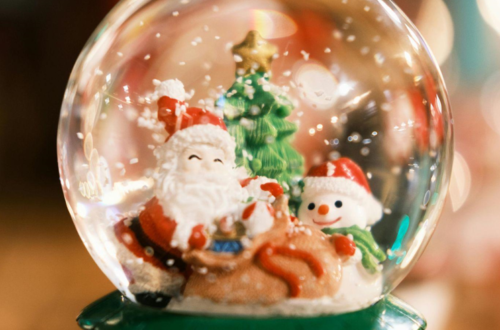
The Science of Christmas Eve: How We Experience Joy and Happiness
Christmas Eve is a special time of year filled with wonder, joy, and excitement. It’s a day when families gather together, exchange gifts, and share a festive meal. Despite the commercialization of the holiday season, many people still hold the true spirit of Christmas Eve in their hearts. But, what exactly makes the holiday so magical and how do we experience joy and happiness on this particular day?
From a scientific standpoint, happiness is a complex emotion that manifests itself in different ways. Researchers have identified two primary types of happiness: hedonic and eudaimonic. Hedonic happiness refers to the pleasure that comes from experiencing positive emotions, such as joy, excitement, and contentment. Eudaimonic happiness, on the other hand, is a sense of fulfillment that comes from living a purposeful and meaningful life.
On Christmas Eve, we experience both types of happiness. The anticipation of the day brings us joy and excitement as we look forward to the festivities ahead. We also experience eudaimonic happiness as we engage in meaningful activities, such as spending time with loved ones, volunteering, and giving to charity. Studies have shown that people who engage in these types of activities are more likely to experience long-term happiness than those who focus on material possessions.
Another reason why we feel joy and happiness on Christmas Eve is the power of nostalgia. The holiday season is steeped in traditions and memories, which evoke positive emotions and help us feel connected to our past. Nostalgia has been shown to improve our mood, increase feelings of warmth and love, and provide a sense of continuity in our lives. Christmas Eve traditions such as decorating the tree, watching holiday movies, and baking cookies are all ways we tap into the power of nostalgia.
The holiday season is also filled with sensory experiences that bring us joy and happiness. The smell of cinnamon and pine, the warm glow of holiday lights, and the taste of festive foods all contribute to our positive emotions. Research has shown that certain scents, such as peppermint, have a mood-boosting effect. Exposure to light, particularly sunlight, has also been linked to increased levels of serotonin, a chemical in the brain that regulates mood.
Furthermore, the act of giving also plays a significant role in our happiness on Christmas Eve. Giving to others, whether it be a thoughtful gift or a charitable donation, activates our brain’s reward center, leading to feelings of joy and satisfaction. Studies have also found a strong positive correlation between giving and mental resilience, suggesting that helping others can benefit our own well-being. In conclusion, Christmas Eve is a day filled with happiness and joy for many reasons, both scientific and sentimental. Whether it’s the anticipation of the day ahead, the power of tradition and nostalgia, the sensory experiences of the holiday season, or the act of giving, our positive emotions are driven by a complex and interconnected web of factors. By understanding the science behind our emotions, we can cultivate happiness not just on Christmas Eve, but throughout the year.




